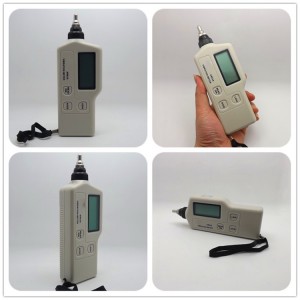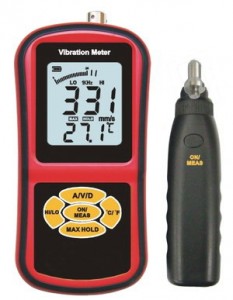The portable vibration meter is designed with piezoelectric effect of artificial polarized ceremic and is suitable for conventional vibration measurement of machinery device and especially for the vibration measurement of revolving machinery.The vibration meter can measure velocity,acceleration and displacement,which has been widely used in many industries,e.g.electric power metallurgy,general aviation field and mechnical manufacturer. It is widely used in the industries of Power, petrochemical, machinery manufacturing, metallurgy, vehicles, etc.
Portable vibration meter has two different body structures: one is integrated type vibraion meter which means probe and main converter are built together,and the other is separated type vibration meter which refers to probe and main converter are two parts and both of them are connected by cable. Users can select it as different requirement. If possible, it is recommended to select integrated type as priority consideration.
Technical Specifications
1)Measure Range
Acceleration:0.1-199.9m/s2(peak value, rms*v2)
Velocity:0.1-1999.9mm/s(rms,rms value)
Displacement:0.001-1.999mm(peak-peak value, rms*2v2)
2)Freqency Range
Acceleration:10Hz-1KHz(LOW),1KHz-15KHz(HIGH)
Velocity:10Hz-1KHz(LOW)
Displacement:10Hz-1KHz(LOW)
3)Accuracy:+/-5% or 2 digits
4)Power Supply:9V alkaline battery.Low voltage indication to remind battery replacement.
5)Display: LCD with 3.5 digits
6)Single output: AC output 2V peak(display full scale),Load impedance 10K ohm or more earphones can be connected.(Only integrated type has such function)
7)Static current: <=20uA
8)Operating current: <=25uA
9)Operating Humidity: 30-90% RH
Except the parameters above, separated type portable vibration meter also has the following function:
1). Environment temperature display
2). Max value locked
3).C./F. temperature converting

